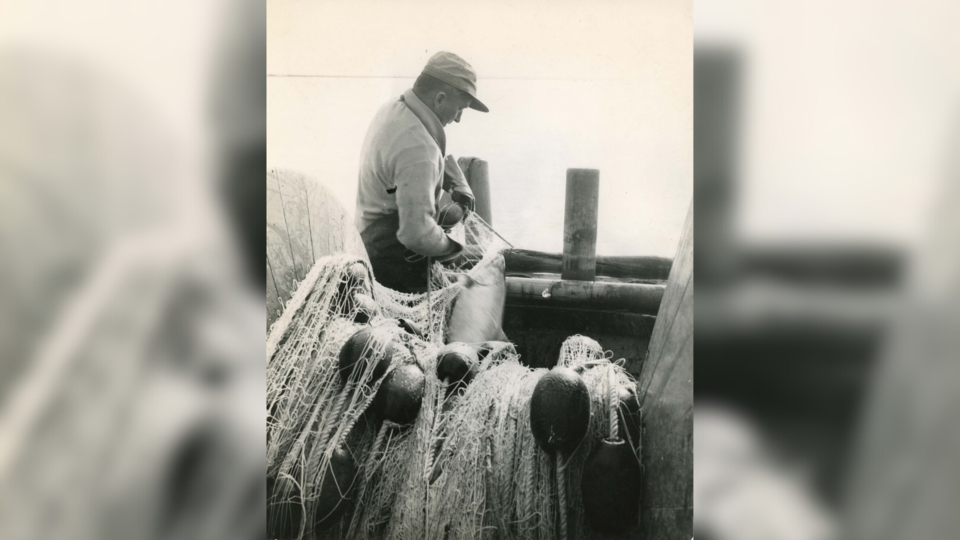Did you know Sea Island was home to the West Coast's only commercial supplier of cedar corks?
Friends of Richmond Archives recently posted a 1960 photo on Facebook of a fisherman hauling in his gillnet fitted with wooden floats, also known as cedar corks.
Cedar corks were common in West Coast fisheries until plastic foam floats became popular in the late 1950s, and Thomas Goulding used to produce cedar corks out of his cork mill at the Acme Cannery on Sea Island.
"Operating seasonally, when fishing and canning were idle, a good day's work at the cork mill could produce as many as 2,000 cedar corks," reads the post.
According to a blog post by Friends of Richmond Archives, Goulding set up the mill in a small building on the west side of the cannery. The cannery was built in 1899 and closed in 1918, but its buildings, net racks and moorage continued to be maintained for the local community, which mostly included Japanese fishermen.
With the help of his Japanese neighbours, Goulding built the building and equipment including saws, lathes and the reamer by hand.
The corks were made from Western red cedar logs supplied by coastal fishermen, which were cut into "cork bolts" about four inches by four inches by four feet long before being cut into six or eight-inch blocks. A hole is then bored through the centre of the cork and smoothed to prevent damaging the fishing net ropes and the cork is turned into an oval shape using a lathe.
Goulding's granddaughter, Doreen Montgomery Braverman, would sometimes help out after school by threading the corks into twine in lots of 10, which would then be dipped in hot tar before being dried.
According to Friends of Richmond Archives, there was no road access to the mill, and the completed cedar corks were "likely shipped out by boat."
Workers at the mill included Japanese and European fishermen, family members, neighbours and friends, and the forced removal of Japanese Canadians in 1942 resulted in supply difficulties at the mill.
The mill was ultimately razed to the ground along with canneries in the area during the expansion of the Vancouver International Airport around 1954.
For more information on Thomas Goulding's cork mill at the Acme Cannery, click here.
Got an opinion on this story or any others in Richmond? Send us a letter or email your thoughts or story tips to [email protected].





